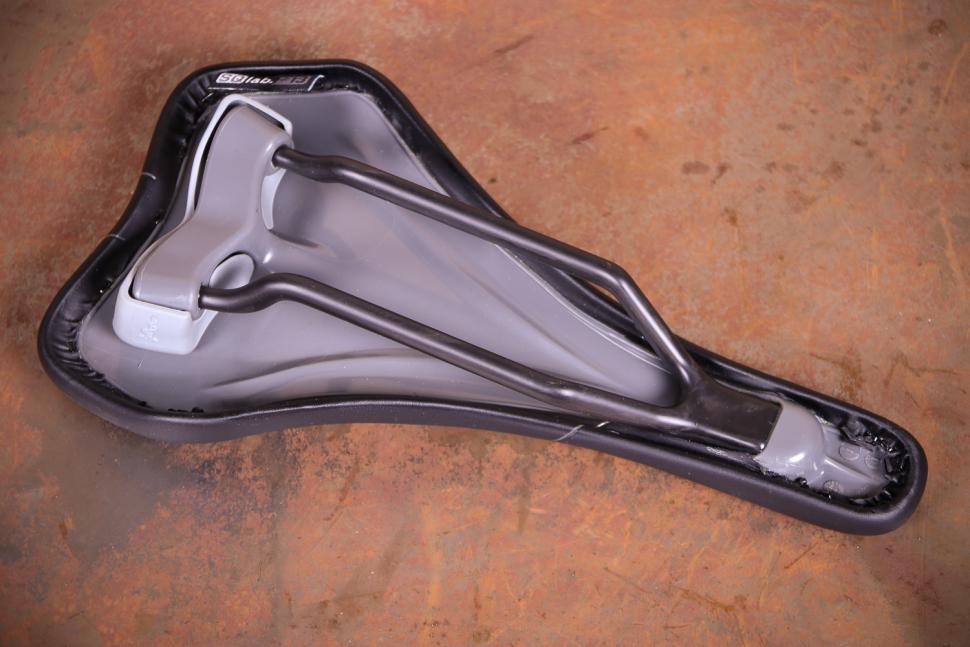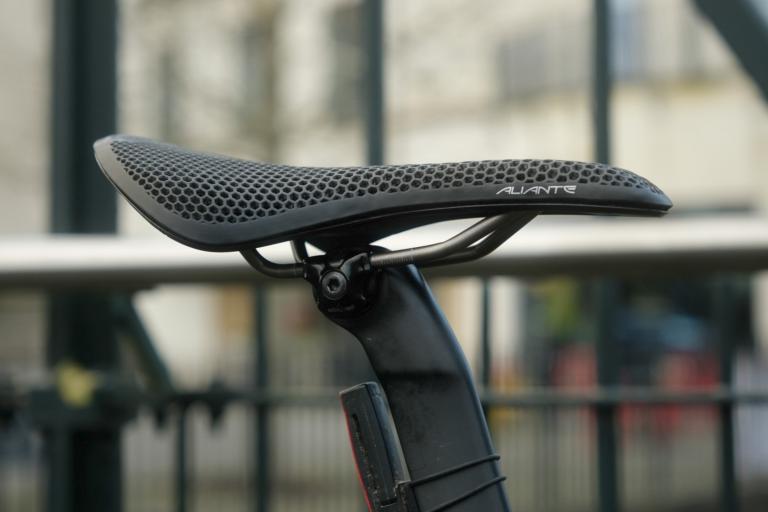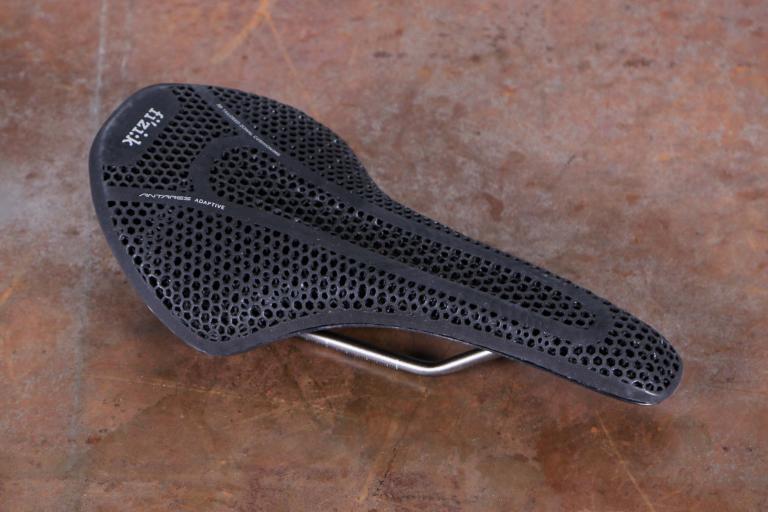- News
- Reviews
- Bikes
- Components
- Bar tape & grips
- Bottom brackets
- Brake & gear cables
- Brake & STI levers
- Brake pads & spares
- Brakes
- Cassettes & freewheels
- Chains
- Chainsets & chainrings
- Derailleurs - front
- Derailleurs - rear
- Forks
- Gear levers & shifters
- Groupsets
- Handlebars & extensions
- Headsets
- Hubs
- Inner tubes
- Pedals
- Quick releases & skewers
- Saddles
- Seatposts
- Stems
- Wheels
- Tyres
- Tubeless valves
- Accessories
- Accessories - misc
- Computer mounts
- Bags
- Bar ends
- Bike bags & cases
- Bottle cages
- Bottles
- Cameras
- Car racks
- Child seats
- Computers
- Glasses
- GPS units
- Helmets
- Lights - front
- Lights - rear
- Lights - sets
- Locks
- Mirrors
- Mudguards
- Racks
- Pumps & CO2 inflators
- Puncture kits
- Reflectives
- Smart watches
- Stands and racks
- Trailers
- Clothing
- Health, fitness and nutrition
- Tools and workshop
- Miscellaneous
- Buyers Guides
- Features
- Forum
- Recommends
- Podcast
review
£230.00
VERDICT:
A very good choice for faster riders seeking the ability to tune their saddle to the type of riding they do
Weight:
210g
Contact:
At road.cc every product is thoroughly tested for as long as it takes to get a proper insight into how well it works. Our reviewers are experienced cyclists that we trust to be objective. While we strive to ensure that opinions expressed are backed up by facts, reviews are by their nature an informed opinion, not a definitive verdict. We don't intentionally try to break anything (except locks) but we do try to look for weak points in any design. The overall score is not just an average of the other scores: it reflects both a product's function and value – with value determined by how a product compares with items of similar spec, quality, and price.
What the road.cc scores meanGood scores are more common than bad, because fortunately good products are more common than bad.
- Exceptional
- Excellent
- Very Good
- Good
- Quite good
- Average
- Not so good
- Poor
- Bad
- Appalling
The SQLab 612 Ergowave Active Carbon Saddle is expensive but packed with pressure-relieving, customisable tech. If you have challenges getting comfortable or regularly swap between aerodynamic and general riding, it could be the one saddle you need.
- Pros: Adjustable, comfortable over long distances
- Cons: Cost
SQLab was founded in Germany in 1992, and since then has specalised in high-end ergonomic products for body contact points: grips, saddles, bars, stems and pedals. Its focus is medical-research-led product development, and the Colubrid-entwined staff that forms its logo signifies its focus on keeping you healthy on your bike.
> Find your nearest dealer here
The 612 Ergowave Active Carbon Saddle is its top-line (and hence top-money) offering, for 'stretched to moderate' positions. It's not optimised for triathlon, nor is it the saddle for a more hybrid-upright position. Available in four widths ranging from 120-150mm in 10mm increments, and with a 100kg weight limit on this carbon-railed model, there's a likely fit for all but the largest-boned. The tested 'Size 13' saddle measured 143mm at the outer edges.
Weighing up
At an actual 210g for the 13 with the medium insert, the carbon-railed 612 is toward the heavier end of the £200-plus saddle-weight spectrum (the Prologo Dimension Nack that Stu tested recently is 157g, for example). That said, many of the lighter models feature stiffer, less forgiving full-carbon constructions and none of the adjustability that the 612 Active offers. Also (and possibly to fit UCI rules) they often feature short noses, further reducing weight. Generally it's rare to see even a high-end saddle weigh less than 150g, with 120g being about as light as you get while retaining padding. To my mind prolonged comfort is far more of a performance aid than fretting about 50g, so I'd say for the tech involved the 612 Active is a more than acceptable weight.
With the carbon rails being slightly-ovalised (7mm x 9mm in profile) you need to be certain your seat clamps are suitable for worry-free clamping. SQLab tech support can advise here. As with all metal-carbon interfaces, check your saddle clamp is free from any sharp edges or burrs that might introduce a stress-fracture point in the carbon.
Technicalities
There are several distinctive features on the 612 saddle. Most notably the 'step' where the rear is visibly higher than the nose. This naturally places your sit bones a little higher, so when you then rotate forwards onto the handlebar there's less pressure on the perineal area. This is enhanced by a dip in the centre of the saddle. There's a ton of science on the SQLab website covering the thinking here, and as the first saddle company to introduce sit-bone measurement and variable-width saddles (it claims), its designers clearly know their stuff.
> Buyer's Guide: How to choose the best saddle for you
The other visibly distinct feature is the 'Adjustable Active Technology' at the back of the saddle, in the form of three differently coloured rubber inserts that you plug in, to adjust the amount of movement the saddle has when pedalling. Going from soft to hard, you get up to 7 degrees of tilt in the pelvis as you pedal, mimicking how your pelvis rocks when walking.
This is somewhat anathema to traditional thinking, where for bike-fit purposes you want to see the pelvis stable – a rocking pelvis indicating excessive saddle height, meaning at full pedal stroke your hip is dipping down to let your leg fully extend while your foot remains in contact with the pedal. These are two different matters though: a rocking pelvis due to excess saddle height is clearly wrong and means your muscles aren't as efficient as they should be, but allowing the pelvis to move slightly while retaining correct leg angles apparently reduces pressure on your spine and sit bones.
Unisex, for a reason
Saddles, like shoes and gloves, are very much a personal fit item with no manufacturer able to cover perfectly the thousands of minute variances between riders. SQLab covers a range of sizes, but doesn't offer men's/women's options, which is in line with other brands who have dropped 'female-fit' models after realising there's no scientific basis for many of the assumptions made that women's bodies differ notably from men's in terms of proportions.
Sit bones are sit bones, and women have as much need for pressure relief as men. Get measured and go with what fits you, not marketing hype when they're grasping for a differentiator.
Sitting still
For me, with measured 133mm sit bones, the 'size 13' 612 saddle felt very firm at first, even under my go-to best bibs. As I suspected, the initial feeling that the saddle surface was very firm disappeared as the miles clocked up, replaced by the realisation that I didn't need to adjust position anywhere near as frequently as on my stock saddle to remain comfortable, even in a stretched full-aero position blatting along a 10km glen in an effort to up my personal best.
This was also on a less-than-pristine road surface, although my setup of 28mm tubeless tyres and 150mm of exposed 27.2mm diameter seatpost provides reasonable damping by itself.
Getting in tune
This all-out aero effort was made on the medium (grey) insert. On a slower, longer ride I swapped midway for the softest (white) insert, and immediately noticed increased comfort. As above, the insert variance is to enhance or restrict the available pelvic rocking motion, but the impression of going softer was indeed of a 'softer', more comfortable ride, without the problem of a softer saddle surface that would lead to compression of the blood vessels and subsequent numbness.
The ability to tune the saddle based on your ride duration, purpose (all-out speed vs slow and steady), your weight and general comfort preference make the 612 Active a good option to consider in your search for the perfect perch.
Verdict
A very good choice for faster riders seeking the ability to tune their saddle to the type of riding they do
road.cc test report
Make and model: SQLab 612 Ergowave Active Carbon Saddle
Size tested: 13, 143mm width x 275mm length
Tell us what the product is for
It's for riders who want to go fast and far, with the ability to get as comfortable as possible.
SQLab says:
The weight optimised 612 ERGOWAVE® active Carbon was specifically designed to accomodate the requirements of both competetive and leisure cyclists both on the road or mountainbike. With 220 g it is the lightest ERGOWAVE® model with active technology. The wave-like shape and raised rear section provides perfect rearward support and an optimal pressure distribution which reaches deep into the body structures resulting in improved power transmission. The lowered nose in combination with the dip provides optimal pressure relief for the perineal area. The flat but slim SQlab MaxContact® saddle nose and the firm padding of the 612 were both specifically designed for the needs on the roadbike. The SQlab active technology allows the saddle to follow the biomechanical motion when pedalling resulting in increased comfort, mobilisation of the spinal discs and reduced pressure to the sitbones.
Tell us some more about the technical aspects of the product?
From SQLab:
Note on compatibility of carbon rails:
Ensure that the seatrail clamping mechanism of your seatpost is compatible with oval shaped seatrails.
In some cases, specific seatrail clamps are available seperately to allow the fitting of saddles with oval shaped rails. In the case of the *Ritchey WCS 1 Bolt Mast Topper the item that you would need is the 1 Bolt Clamp Kit 7x9.6mm (denoted by the letters DF).
Technical support: shop [at] sqlab.com
*Ritchey is a registered trademark of Ritchey Design Inc.
Available Widths in cm 12, 13, 14, 15
Area of use Road & MTB Race
Length (mm) 275
Weight (g) 183, 184, 185, 189
Hardness in SQ-shore 60
Relief of perineal area (%) 60
Material Rails Carbon fibre (oval shape 7 x 9.6 mm)
Material Cover C84
Material Padding Superlight Foam
active Technology 3 different elastomer dampers (can be interchanged)
max. Weight (kg) 90
Rate the product for quality of construction:
9/10
Finished very well.
Rate the product for performance:
9/10
I could go further and faster in more comfort.
Rate the product for durability:
8/10
Still looks like new.
Rate the product for weight (if applicable)
6/10
Definitely not the lightest, but a fair comparison with similar tech is hard.
Rate the product for comfort (if applicable)
8/10
Not initially comfortable, but once you settle in it's like it's not there.
Rate the product for value:
5/10
£203 is a lot of cash. But if it works for you...
Tell us how the product performed overall when used for its designed purpose
Very well indeed. I'd probably like to have more range in the insert stiffness to try three options – the hardest was too hard to contemplate.
Tell us what you particularly liked about the product
The longterm comfort afforded by great design and padding.
Tell us what you particularly disliked about the product
Nothing, really.
Did you enjoy using the product? Yes
Would you consider buying the product? Yes
Would you recommend the product to a friend? Yes
Use this box to explain your overall score
As a saddle for riding fast and long, it's a cracker, but that £200-plus pricetag and less-than-svelte weight does mark it down.
About the tester
Age: 44
I usually ride: Merida Ride 5000 Disc My best bike is:
I've been riding for: Over 20 years I ride: A few times a week I would class myself as: Expert
I regularly do the following types of riding: cyclo-cross, club rides, general fitness riding, mountain biking, Dutch bike pootling
Living in the Highlands, Mike is constantly finding innovative and usually cold/wet ways to accelerate the degradation of cycling kit. At his happiest in a warm workshop holding an anodised tool of high repute, Mike's been taking bikes apart and (mostly) putting them back together for forty years. With a day job in global IT (he's not completely sure what that means either) and having run a boutique cycle service business on the side for a decade, bikes are his escape into the practical and life-changing for his customers.
Latest Comments
- David9694 13 min 36 sec ago
Drivers react to Brinkworth Road Lidl works causing delays...
- Rendel Harris 25 min 38 sec ago
+1 for diesel; is the corner on a bus route? They're the worst culprits though there are plenty of others. Often impossible to see, one of my...
- philhubbard 1 hour 25 min ago
Absolutely not. I work for a cycling company and regularly travel to Europe with a bike, I always get stopped to check if I had products to sell in...
- David9694 1 hour 54 min ago
Woman arrested after car flips onto roof in Oxford crash...
- eburtthebike 3 hours 2 min ago
I am, but not that much!
- Rendel Harris 3 hours 4 min ago
Nobody "deserves" to be spat on, be they riders, fans or anyone else. Saying that riders shouldn't spit on spectators isn't demanding they act like...
- Another_MAMIL 14 hours 2 min ago
Q36.5 Gregarius Essential Bib Knickers fit the bill: 3/4 length bib tights for warm weather.
- Rendel Harris 14 hours 13 min ago
Jolly good. Only it hasn't been and it is still a public bridleway. Feel free to look it up.
- jaymack 15 hours 3 min ago
"...it feels more like a £100+ jersey". It's almost as if cycling apparel is over priced.
- mike the bike 16 hours 16 min ago
I've had a few Lezyne bits and bobs over the years and while it's true I've never bothered to return anything under warranty, I've had a couple of...







Add new comment
1 comments
A little bit of movement... that was the secret of the legendary comfortable San Marco SKN with the radical split at the rear. The two rear sections moved independently. Pity it's no longer in production..